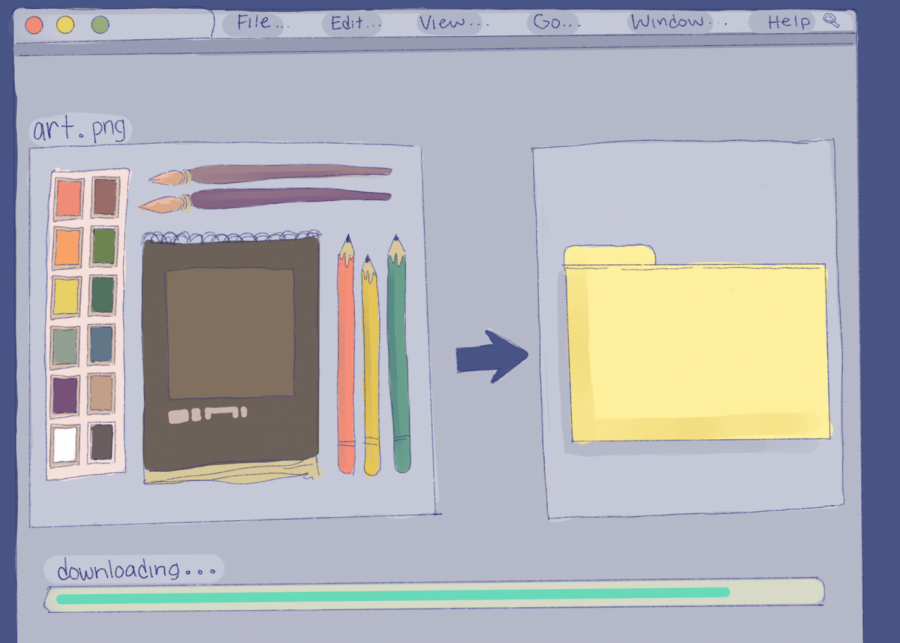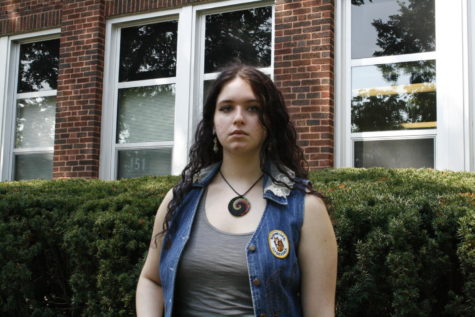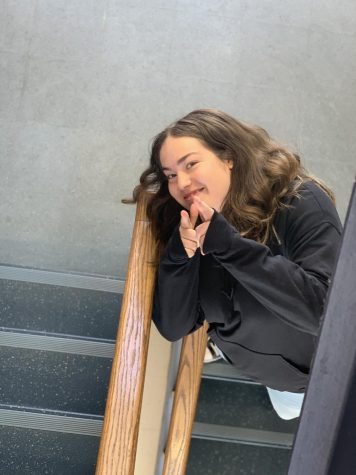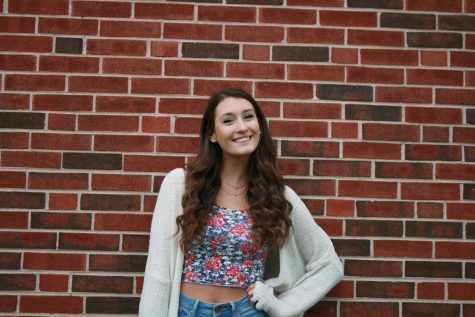AP Art adapts to a pandemic lifestyle
November 13, 2020
Due to the COVID-19 pandemic, many teachers have had to adjust their curriculum to best suit student’s needs over a computer. RB is only at 25 percent attendance currently, and until we get up to 100 percent, classes like AP Art will remain digital.Teachers and students are adapting to the remote/hybrid model in different ways. In AP art, students are taking ownership of their creative process to build their portfolio and stay motivated to work in a hands-on class.
Blaire Jensen discussed how he is Changing the curriculum to suit a more remote classroom environment.
“Last year the AP College Board changed the layout or idea for the class. It became much more about investigating, experimenting, and developing the theme of your artwork. The class is now less about the final product or artwork and more about the process. So the general method the students are following this year is similar to last year. The problem I see this year, because of our remote situation is I can’t see the students progress from day to day. I really do not have a feel for who is working consistently on their portfolio,” Jensen said.
AP art students are tasked with committing to a “Sustained Investigation,” which means that they have to explore an idea or question and base art projects around said investigation. Students also follow a calendar for their critiques and deadlines to keep them on track.
“By December it will be apparent who has committed some quality time to their sustained investigation. I will try to monitor progress daily and weekly, but the critique is where I will really see the progress they have made,” Jensen said.
First-year AP art student and senior Ella Riseman talked about her experiences with the class from the perspective of someone who has never taken it before.
“It still is a hands-on class, considering you still have all the materials you need to complete a project. This is my first time taking the class, so I’m not too aware of how it functioned prior to the pandemic,” Riseman said.
Riseman personally struggles to keep herself motivated, which is something that many students around the country can relate to. “It’s hard to keep on task even if you do love art. That’s the issue with quarantine. A lack of connection in the classroom,” Riseman said.
Riseman does not personally want to go into the art field, but she feels as if the class is helping to develop her skill set as an artist, which is beneficial overall. “[AP studio art] is just encouraging me to practice more, which in turn naturally develops my skill.” Riseman said.
Second-year AP art student and Junior Olivia Webber talked about the challenges she faces working online.
“Sometimes it’s hard to make art because being in the environment of the classroom gives you more motivation,” says Webber, “and it’s a very self-led class so I’ve learned to push myself to sit down and be productive.’
The technology hurdle has also proven to be challenging. “It’s a little irritating submitting work online because it’s obviously not great quality using a phone camera versus seeing it in person,” she added, but overall, she’s adapting to the changes and making it work.
Despite the challenges, Jensen is working to make the best of a bad situation. “I am trying to do the best I can to make the class [and all classes] as good as they can be under the circumstances. I love having students here and seeing their work, discussing ideas and techniques. So my personal opinion is probably not too different from many teachers.”
It’s uncharted ground for students and teachers, but Jesen is determined. “Let’s make the best of it because the students want to learn and become better at their art and everything in their life. I’d really like to be able to help with that if I can. No matter how small of a positive impact I might make, I really do hope I can help.”




